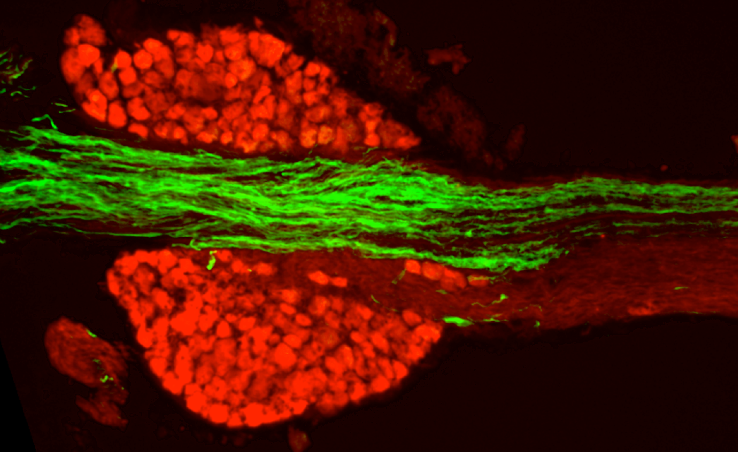
.jpg)
Center
Center for Brain BodyThe brain conducts a symphony of sensory signals from the body, orchestrating basic functions of each major physiological system: cardiovascular, respiratory, digestive, immune, and reproductive.
Center
Brain Body CenterThe Liberles lab studies vagal sensory neurons in cardiovascular system and spinal sensory neurons in the reproductive system.
Messages from the heart. Within the cardiovascular system, specialized sensory neurons report on the pressure, volume, and chemical composition of blood to ensure stable cardiac output and tissue perfusion. Neuronal surveillance enables adaptation to environmental stressors like reduced oxygen during a high-altitude hike or changing gravitational load when standing up. Failure to stabilize blood pressure and volume, even for a moment, can lead to dizziness, fainting, and injury. Also, cardiovascular signals can drive some of our most basic emotions, as optogenetic induction of a racing heart can cause anxiety. The heart-brain axis thus provides essential control over physiology, behavior, and mood.
Sensory neurons and reproduction. The female reproductive tract is densely innervated by spinal sensory neurons and autonomic motor neurons, yet their functions in reproduction and pregnancy are poorly understood. Some uterine neurons mediate pain sensation during labor, yet molecular triggers that activate these neurons are unclear. Other neuron types are 'orphan neurons' of unknown function. Charting the functions of uterine neurons should reveal fundamental mechanisms of reproduction, and may provide new therapeutic targets for maternal and infant care.